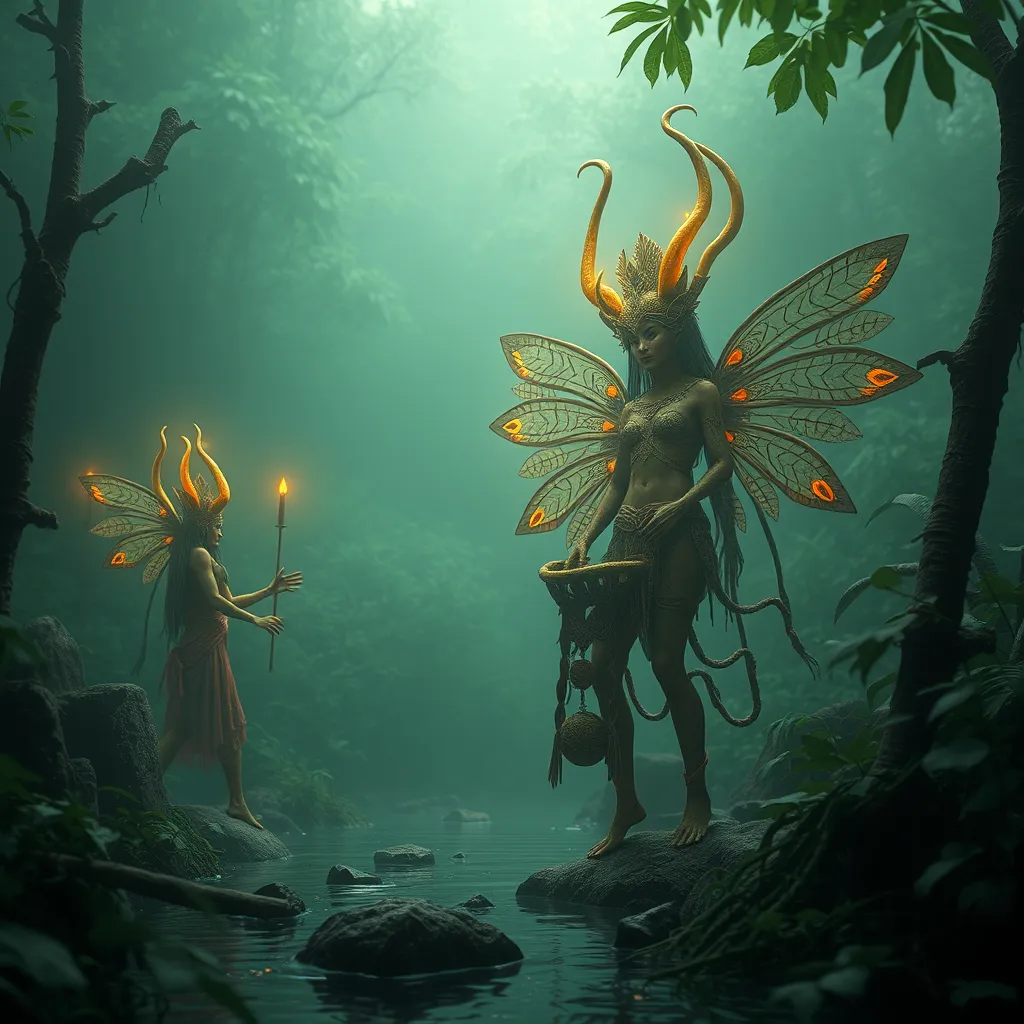The Mermaids’ Mirror: Examining the Lore of Sea Women
I. Introduction
Mermaid mythology has captivated human imagination for centuries, weaving together tales of beauty, danger, and the unknown. Sea women, often depicted as enchanting yet perilous creatures, hold a significant role in folklore across various cultures. This article delves into the rich tapestry of mermaid lore, exploring its historical origins, symbolism, regional variations, and enduring presence in modern culture.
II. Historical Origins of Mermaid Lore
The origins of mermaid tales can be traced back to ancient civilizations, where they were often seen as representations of humanity’s relationship with the sea. From the Assyrian goddess Atargatis, who transformed into a fish, to the Greek sirens luring sailors to their doom, these narratives reveal much about the societies that created them.
A. Ancient civilizations and their sea women tales
In ancient Babylonian and Assyrian cultures, tales of sea women like Atargatis emphasized fertility and the duality of life and death. The Greeks expanded on these themes with their sirens—beautiful creatures whose songs could lead men to their demise.
B. The evolution of mermaid myths across cultures
As cultures interacted and evolved, so too did the myths surrounding mermaids. In medieval Europe, the mermaid became a symbol of temptation and sin, while in Asia, figures like Nüwa represented creation and balance.
C. Key historical figures in mermaid lore
- Atargatis – The Syrian goddess often considered the first mermaid.
- Melusine – A European fairy tale character who transforms into a serpent.
- Sirens – Greek mythological creatures known for their enchanting songs.
III. The Symbolism of Mermaids
Mermaids embody a complex array of symbolism that reflects societal attitudes towards femininity, danger, and the ocean itself.
A. Representation of femininity and beauty
Mermaids are often depicted as stunningly beautiful, representing the ideal of femininity. Their allure can symbolize the power of women and the societal expectations placed upon them.
B. Mermaids as symbols of danger and seduction
Conversely, mermaids are also seen as dangerous seductresses, leading men to their doom. This duality illustrates the fear of female sexuality and the potential consequences of desire.
C. The duality of the mermaid’s nature: nurturing vs. destructive
Mermaids can be nurturing figures, guiding lost sailors to safety, or destructive forces, wreaking havoc on ships. This duality represents the multifaceted nature of women in society.
IV. Regional Variations of Sea Women
Mermaid folklore varies significantly across regions, each culture adding its unique twist to the sea women narrative.
A. European mermaids: From sirens to selkies
In Europe, mermaids and their counterparts like selkies (seal-shifting women from Celtic folklore) highlight themes of transformation and longing.
B. Asian sea women: Nüwa and other figures
In Chinese mythology, Nüwa is often depicted as a creator goddess, embodying the nurturing aspect of water. Other cultures, like Japan, feature the ningyo, a fish-like creature with the ability to grant immortality.
C. Indigenous oceanic cultures and their sea spirits
Indigenous cultures often have deep connections to the ocean, featuring sea spirits such as the Hawaiian mo’o or the Inuit’s sedna, showcasing the reverence for the sea and its mysteries.
V. The Role of Mermaids in Literature and Art
Mermaids have inspired countless literary and artistic works, serving as powerful symbols and characters throughout history.
A. Famous literary works featuring mermaids
- The Little Mermaid by Hans Christian Andersen – A tale of love and sacrifice.
- The Mermaid by Alfred Lord Tennyson – A poem exploring the themes of longing and loss.
- The Fisherman and His Soul by Oscar Wilde – A story intertwining love, sacrifice, and the supernatural.
B. Depictions of sea women in visual arts
Artists from various eras have depicted mermaids, from Botticelli’s classic works to modern interpretations in films and illustrations. Their portrayals often reflect societal changes and evolving attitudes toward femininity.
C. The influence of mermaid lore on modern storytelling
Mermaid tales have influenced contemporary storytelling in film, literature, and pop culture, often reimagining sea women as symbols of empowerment and adventure.
VI. Mermaids in Modern Culture
In recent years, mermaids have seen a resurgence in popularity, becoming icons of modern culture.
A. The resurgence of mermaid imagery in pop culture
From films like Disney’s “The Little Mermaid” to television series such as “H2O: Just Add Water,” mermaids have become central figures in family entertainment, often reinterpreted to reflect modern values.
B. Mermaids as icons of environmentalism
Mermaids are increasingly seen as symbols of environmentalism, representing the fragility of the oceans and the need to protect marine ecosystems.
C. The commercial appeal of mermaid-themed media
The commercial appeal of mermaid imagery can be seen in fashion, beauty products, and themed events, showcasing their enduring allure in consumer culture.
VII. Psychological Interpretations of Mermaid Myths
Mermaids also lend themselves to psychological interpretations, exploring deeper themes of the human experience.
A. Mermaids and the exploration of the unconscious mind
Freudian and Jungian analyses often suggest that mermaids represent aspects of the unconscious, embodying desires and fears that lie beneath the surface.
B. The connection between sea women and mental health themes
Mermaids can symbolize the struggles with identity, mental health, and personal transformation, representing the journey toward self-acceptance.
C. The role of mermaids in personal transformation narratives
Many modern stories featuring mermaids revolve around themes of transformation and growth, echoing the challenges faced by individuals in their personal lives.
VIII. Conclusion
In conclusion, the lore of mermaids holds significant cultural and psychological importance, reflecting societal fears, desires, and the complexities of femininity. The enduring allure of sea women in contemporary society speaks to their timelessness and relevance, as they continue to inspire and provoke thought across various mediums. As we navigate the depths of mermaid mythology, we uncover not just the stories of these enchanting beings, but the intricate connections they forge between humanity and the mysterious ocean.



